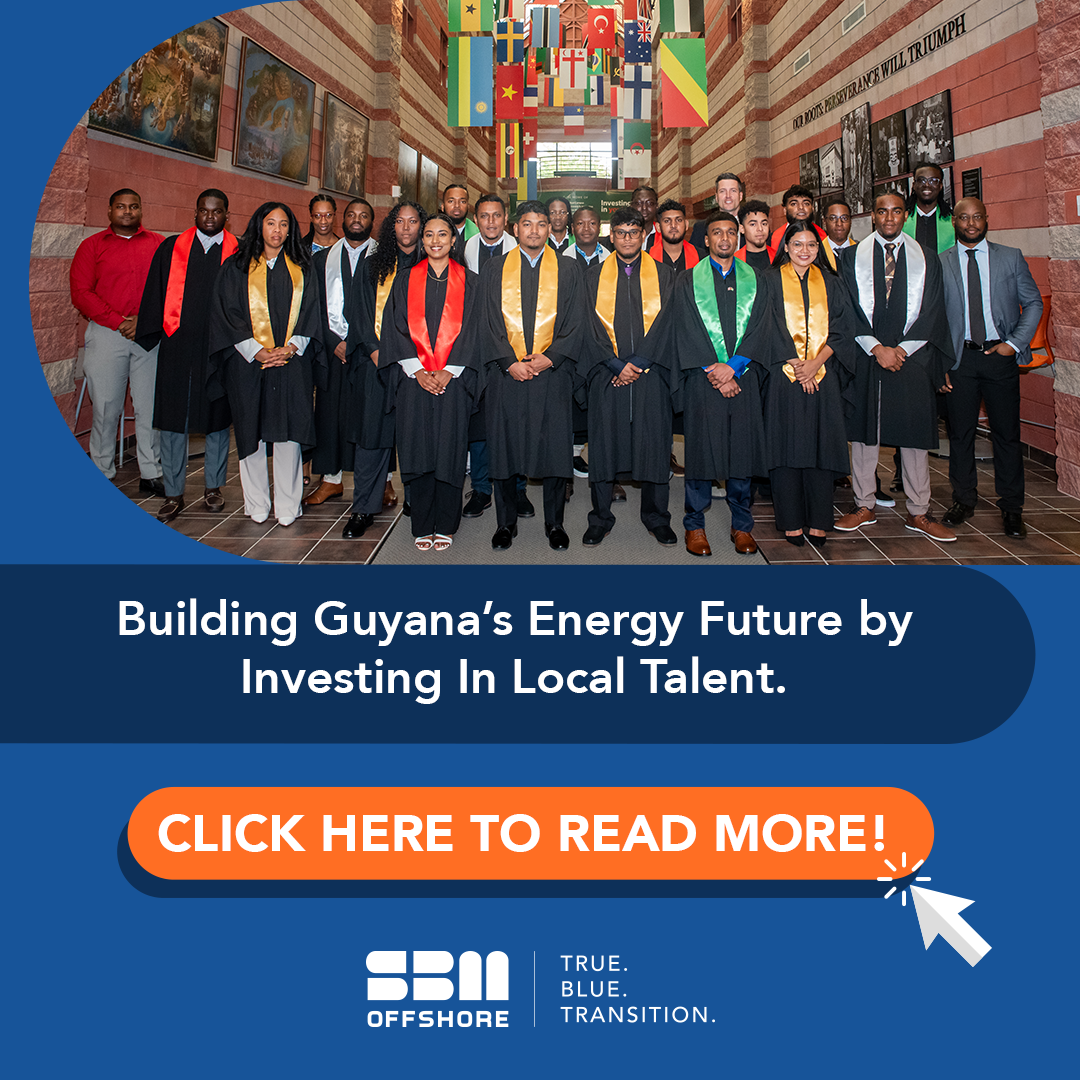Guyana’s oil revenues are providing the fiscal space necessary to drive its energy transition while the oil industry works to implement sustainability measures in its operations. These themes were the subject of a panel discussion— Sustainable Development and Energy Access—at the 2025 Guyana Energy Conference in February, where industry experts, government officials and corporate leaders discussed the intersection of energy access, sustainability and economic development.
Managing Director of Environmental Management Consultants Shyam Nokta, reminded attendees that Guyana established its Low Carbon Development Strategy (LCDS) before oil production began. The government has since updated the document to LCDS 2030 to include the role Guyana’s newfound oil wealth can play in the country’s transition to clean energy sources such as solar, wind, biomass and natural gas.
“We are examining different energy options to meet our needs today, but also in the future,” Nokta stated. “And by and large, be able to ensure that the decisions we’re taking as a country are helping us not only meet national goals and objectives but also making a contribution to the much larger global sustainable development framework.”
Professor Chandrabhan Sharma, Professor Emeritus at the University of the West Indies, explained that most Caribbean nations—Guyana included—depend on fossil fuels for power generation and transportation. This dependence makes them vulnerable to energy price volatility. However, Guyana’s Gas-to-Energy project can reduce this vulnerability by using domestic natural gas for power generation, lowering electricity costs for homes and businesses, as explained by acting CEO of Guyana Power & Light Inc. (GPL), Kesh Nandlall.
Professor Sharma also noted energy inefficiency as a challenge across the Caribbean. “Many countries have not yet fully embraced energy efficiency measures in sectors like transportation, building design and industrial operations,” he noted.
He stressed that as Guyana expands its renewable energy portfolio, modernizing the electricity grid is essential to integrate solar and hydropower while maintaining system stability. Accordingly, Guyana will upgrade its transmission infrastructure to ensure a smooth power flow.
Dr. Mahender Sharma, CEO of the Guyana Energy Agency, detailed the country’s clean energy projects, including 30,000 solar home systems distributed across hinterland communities, many of which previously had no access to electricity; solar installations in schools and hospitals, enhancing energy resilience in critical sectors; mini-grid solar systems with battery storage for remote communities; and a newly operational small-scale hydro project at Moco Moco.
While Guyana’s oil revenues broaden opportunities to quicken the transition, companies in the sector prioritize sustainability. Rafael Fumis, Country Manager of MODEC Guyana, noted that while “oil is still going to be here for a while,” it remains critical for providing accessible energy and supporting economic growth.
He explained MODEC’s role in building Guyana’s fifth floating production, storage and offloading (FPSO) vessel, which will add 250,000 barrels per day in production capacity in 2026, boosting revenues.
MODEC is also taking steps to reduce the environmental impact of offshore operations. “We are implementing industry-proven advanced technologies in that vessel…[such as] the combined cycle energy production system, which will reduce the consumption of gas on board and, consequently, the emissions,” Fumis said.
Additionally, MODEC is investing in local workforce development as the company expects to create numerous jobs while it operates the FPSO for decades, Fumis explained. MODEC currently employs 22 Guyanese, the official said, and the company recently launched its first trainee program, sending eight Guyanese trainees to Brazil and Singapore for hands-on experience in FPSO operations. “We believe that to make [our operations] sustainable, we have to invest in training and local capacity development,” Fumis added.
Participation in carbon markets is also boosting sustainable development ambitions. Carlos Cordova, Director of Environmental Solutions at S&P Global, said carbon credits can play a role in financing clean energy and climate adaptation projects. Over 85% of Guyanese land is forested, and it has secured US$750 million in payments from Hess Corporation by selling carbon credits over 10 years.
The government has committed these funds to sustainability projects, with 15% allocated directly to Indigenous communities for self-determined development projects.
The nation expects future carbon credit sales to further supplement oil revenues in financing its energy transition. Professor Sharma pointed out that Guyana’s energy transition should align with the United Nations Sustainable Development Goals, which advocate for clean and affordable energy, among other things.
As technology advances, he noted, the cost of renewable energy is becoming increasingly competitive with fossil fuels, making this an opportune moment for Guyana to scale up investments in solar, hydro and energy efficiency initiatives. Moreover, Professor Sharma urged regional cooperation, suggesting that Guyana can learn from other Caribbean nations.
“There are many of our neighbors who are more advanced and some less advanced in terms of renewable energy and we should learn from them. What were the mistakes? What were the pitfalls? What you should do, and what you should not do.”
He acknowledged that Guyana still has significant infrastructure work ahead. “And I look forward to working with everyone to accomplish that,” he said.





